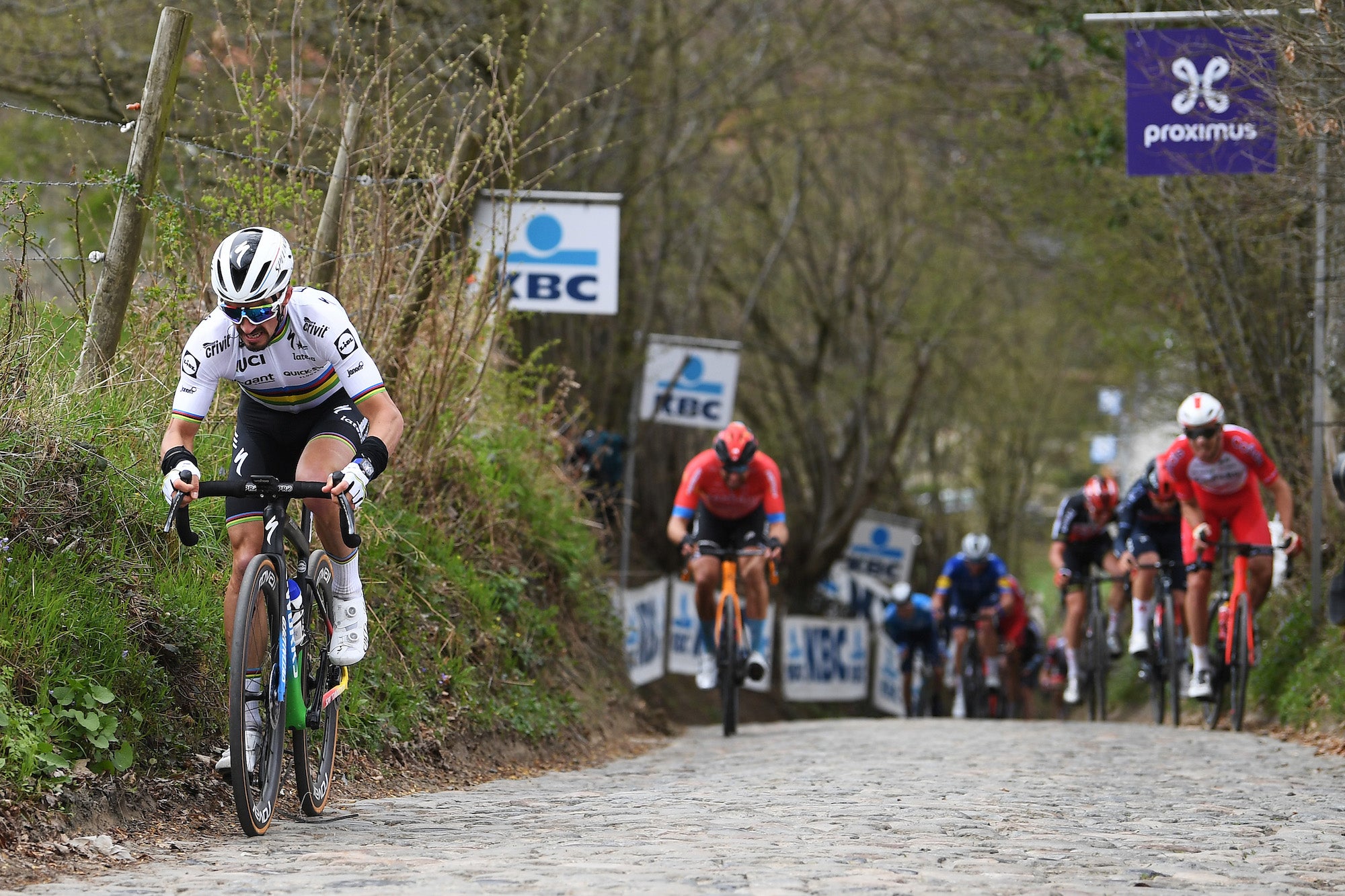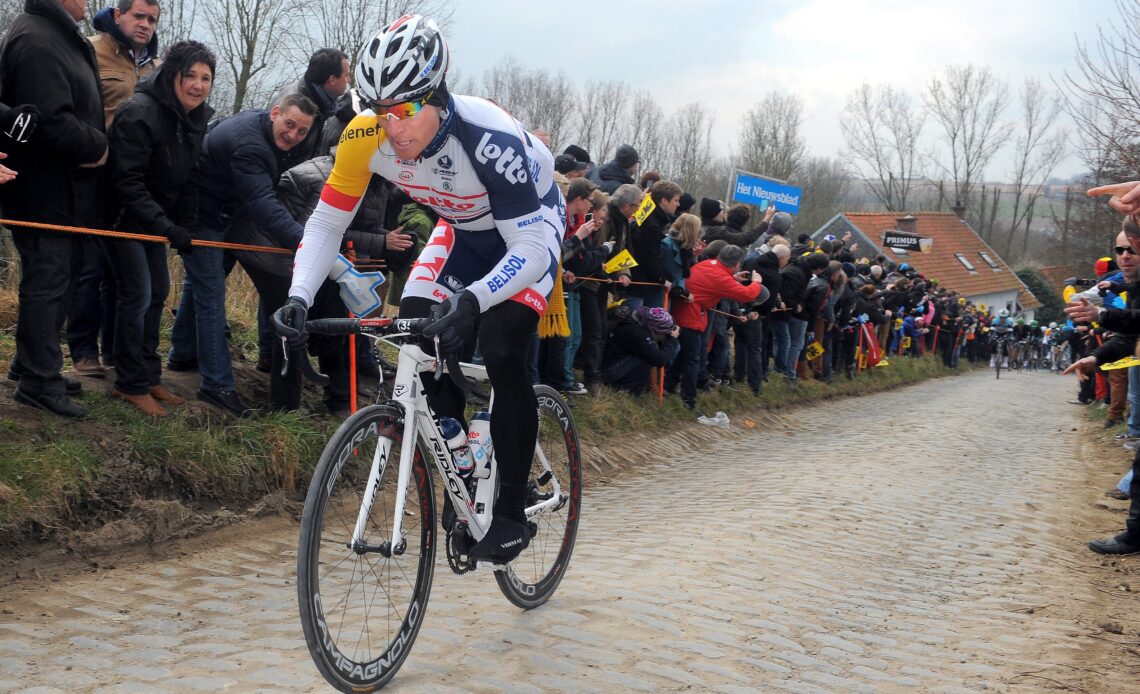One of the most special things about the Tour of Flanders is the vast amount of fans that line the edge of the roads, cheering on the riders as they make their way up the brutally steep bergs and over the bone-juddering cobbled sections. The waving flags, tireless chanting, the smell of frites, and the hectic fan zones add something unique to this race which is a spectacle already within itself.
The Tour of Flanders brings together all the elements that define the cycling culture of the Flemish region: steep bergs, cobblestones and passion. This Belgian region is a territory that knows how to care for and protect the cobbled roads that are part of its history.
To celebrate the return of the highly-anticipated Monument race, we look at six of the most popular bergs in Flandrian history.
Molenberg
For many editions, the Molenberg was a crucial point in the of the Tour of Flanders. The poor condition of the cobblestones and the narrow path can cause a lot of damage to the peloton. It’s a climb of just over 400 metres with an average gradient of 7%, but positioning is vital to maintain a chance of being in the leading group.
This hill could be decisive for of any rider who was not placed in the top fifteen. It was included in the Tour of Flanders for the first time in 1983 and, like many of the climbs near Ninove, it has been losing prominence since 2012. Even so, it is still a regular part of the route, albeit far from the finish line, quietly reminding us of its identity.
Koppenberg
The most feared ramp in the region. The iconic snapshot from the lowest point of the Koppenberg shows how the cobblestone path draws a sinuous line thorough the forest. It’s a berg with a deep history in the Tour of Flanders, first included in 1976 after Walter Godefroot – double winner of the race in 1968 and 1978 – discovered it a few years earlier.
Read more: The history of the Tour of Flanders
The Koppenberg’s brutal inclines meant that some people suggested it unfairly affected the race, and that the surface was dangerous. In 1987 when Jesper Skibby slipped and fell on the Koppenberg, and the car following him ran over his bike, these claims were vindicated.
 The hill was taken out of the race for 15 years in the until a new surface of Italian cobblestones was laid and the road was widened in 2001. While this changed the climb, the Koppenberg still remains a tough challenge.
The hill was taken out of the race for 15 years in the until a new surface of Italian cobblestones was laid and the road was widened in 2001. While this changed the climb, the Koppenberg still remains a tough challenge.
Taaienberg
The Taaienberg has been fixed hill…

